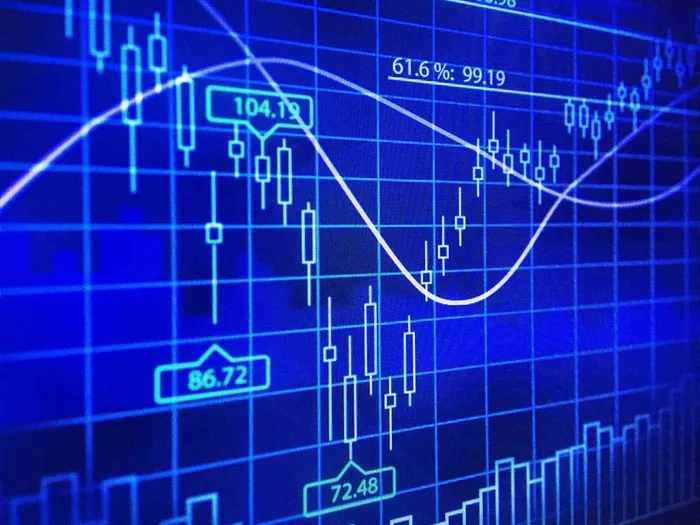The DAX, Germany’s premier stock market index, is a widely followed benchmark that represents the performance of the country’s top 30 companies. Trading DAX futures provides investors with an avenue to capitalize on the movements of this influential index. In this comprehensive guide, we will explore the essential aspects of trading DAX futures, covering strategies, risk management techniques, and the unique dynamics that make the DAX an attractive market for futures traders.
Understanding DAX Futures
DAX futures are financial derivatives that derive their value from the DAX index. Traded on futures exchanges, these contracts allow investors to speculate on the future direction of the DAX without owning the actual stocks in the index. DAX futures are standardized contracts with set expiration dates and contract sizes, providing a structured environment for trading.
The DAX index itself comprises 30 major German companies listed on the Frankfurt Stock Exchange, representing a diverse range of industries. The performance of these companies influences the value of the DAX, making it a key indicator of the German stock market.
Getting Started with DAX Futures Trading
To begin trading DAX futures, investors typically need to open an account with a brokerage that offers access to futures markets. Selecting a reputable and well-regulated broker is essential for a secure trading experience. Once the account is set up and funded, traders can access the futures market and start exploring DAX futures contracts.
DAX futures are traded on various futures exchanges, with the Eurex Exchange being a primary venue for DAX futures trading. Traders can choose from different contract months, each with its own expiration date, allowing for flexibility in trading strategies.
Navigating DAX Futures Contracts
DAX futures contracts come in different forms, including quarterly and serial futures. Quarterly contracts have specific expiration dates corresponding to each quarter of the year, while serial contracts have monthly expirations. Traders can choose the contract that aligns with their preferred time horizon and trading strategy.
Understanding the contract specifications, including tick size, contract size, and expiration dates, is crucial for accurate order placement. Each futures exchange provides detailed information on contract specifications, enabling traders to make informed decisions.
Leverage and Margin Trading in DAX Futures
One of the significant attractions of trading DAX futures is the availability of leverage. Leverage allows traders to control a more substantial position with a smaller amount of capital. While leverage enhances the profit potential, it also increases the risk of significant losses. It’s crucial for traders to use leverage judiciously and consider their risk tolerance before engaging in leveraged trading.
Margin requirements are a key consideration in futures trading. Traders must maintain a certain amount of margin in their accounts to cover potential losses. Understanding margin requirements and monitoring account balances are essential aspects of risk management when trading DAX futures.
Risk Management Strategies
Effective risk management is paramount in futures trading, and DAX futures are no exception. Traders can implement various risk management strategies to protect their capital and minimize potential losses. Setting stop-loss orders, which automatically close positions at predetermined price levels, is a common practice to limit downside risk.
Diversification is another essential element of risk management. Rather than concentrating all funds on a single trade, diversifying across different assets or markets can help mitigate the impact of adverse price movements in one particular position.
See Also: Why do futures markets exist: Things You Need To Know
Analyzing DAX Futures Market Data
Informed decision-making in DAX futures trading relies on a thorough analysis of market data. Traders can utilize technical analysis tools, such as charts, indicators, and trend lines, to identify potential entry and exit points. Historical price data, trading volumes, and market sentiment indicators provide valuable insights into the current state of the market.
Fundamental analysis is also relevant for understanding the broader economic factors that could influence the DAX index. Traders should stay informed about economic indicators, corporate earnings reports, and geopolitical events that may impact the German economy and, consequently, the DAX.
Executing DAX Futures Trades
Executing trades in DAX futures involves selecting the appropriate contract, specifying the order type, entering the quantity, and setting any additional parameters such as stop-loss or take-profit levels. Traders can choose between market orders for immediate execution or limit orders for more precise entry points.
The execution process is streamlined on most trading platforms, providing traders with real-time information and order execution capabilities. It’s essential for traders to review and confirm their orders before execution to avoid any unintended trades.
Trading Strategies for DAX Futures
DAX futures offer a range of trading opportunities, and various strategies can be employed to navigate this market successfully. Trend-following strategies involve identifying and capitalizing on established market trends, while mean-reversion strategies aim to profit from price reversals.
Volatility-based strategies can be particularly relevant in the DAX futures market, given the index’s sensitivity to market sentiment and economic developments. Traders can also explore algorithmic or quantitative trading strategies to capitalize on short-term price movements.
Monitoring DAX Futures Positions
Once a position is established in DAX futures, monitoring and managing that position are critical for successful trading. Traders should regularly review their open positions, reassess market conditions, and adjust stop-loss or take-profit orders as needed. Staying vigilant and proactive in managing positions ensures that traders can respond to changing market dynamics effectively.
Conclusion
Trading DAX futures provides investors with an exciting avenue to participate in the dynamic movements of the German stock market. By understanding the fundamentals of DAX futures, implementing effective risk management strategies, and staying informed about market data and trends, traders can navigate this market with confidence.
Continuous learning and adaptation to changing market conditions are key to success in DAX futures trading. As one of the most prominent European stock market indices, the DAX offers a diverse range of trading opportunities for those willing to explore, analyze, and engage in the exciting world of futures trading.


